Forget The Vows: 6 Ways Weddings Are Different In Japan
A conversation with six women about tying the knot in Japan
From multiple dress changes to time differences between the actual marriage and the wedding ceremony, tying the knot in Japan is filled with intriguing traditions.
In the first part of this article, I discussed the five ways proposals and engagements are different in Japan. But what about weddings? From the simplest procedure you can imagine to elaborate celebrations, tying the knot here covers a surprisingly wide range of interesting procedures.
In a bid to find out more about how wedding ceremonies and marriages are done in Japan, I spoke to six Japanese friends about their personal experiences and general observations, and as usual, there were a few fundamental differences.
1. No fuss means no fuss — and often no wedding celebrations at all
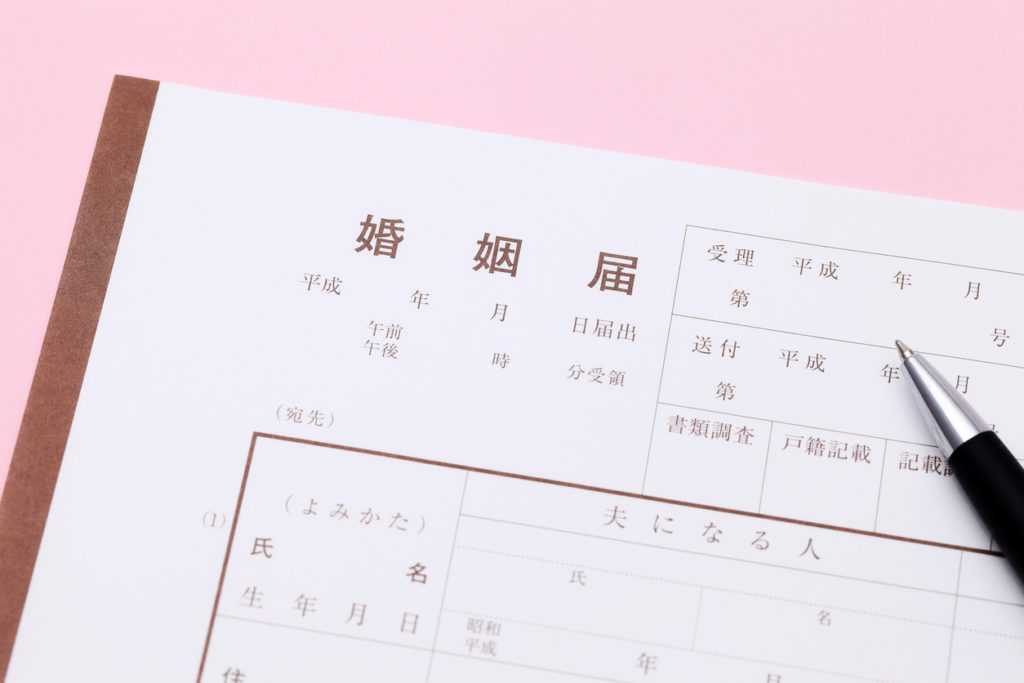
Japanese marriage certificate
Once a proposal has been accepted, couples in many Western countries usually set about planning a wedding. In Japan, however, this step is optional. My friend Ibuki got engaged to her now-husband soon after they got together, and a year later they simply went down to the city office, filled out a form and voila – officially married.
When I heard this, I was gobsmacked. In most Western countries, even the most minimal wedding still requires a short ceremony with an officiant and two witnesses. In Australia, you have to give one month’s notice of your intention to marry and book a time slot at the registry office. All of this naturally leads to people putting on their finery, buying a bouquet, maybe inviting a few guests. This is as low-key as a wedding gets in the West. But here, it is possible to be entirely no fuss when it comes to getting hitched.
2. Spreading out the love in time
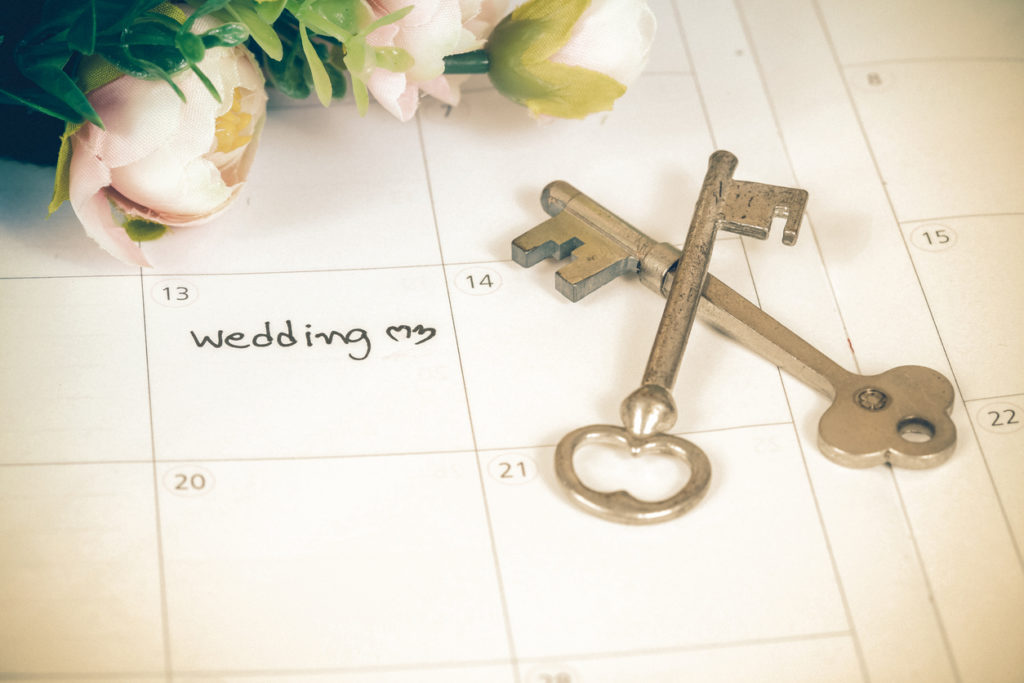
Wedding ceremonies almost never take place on the same day couples in Japan tie the knot.
Of course, everyone has to register their marriage at the ward or city office regardless of, if or how they hold a ceremony. But whereas in Western countries everything is normally done on the same day, in Japan, the registration part is sometimes done well before any events.
For instance, Mai and her husband registered their marriage after a four-month engagement, but held their wedding party another eight months later. Ikuko did the paperwork the day before they flew to Hawaii for a beach wedding. Miho and her husband had a church ceremony and a big reception, but they didn’t actually register their marriage until two and a half years later when she was already pregnant with their first child. Although, she did admit that this is a pretty “rare case.”
After a few of these stories I started to wonder — which day did they consider themselves actually married on? No matter when they held a wedding, most people agreed: The day they filled out the paperwork was the day they were married.
3. The party never stops
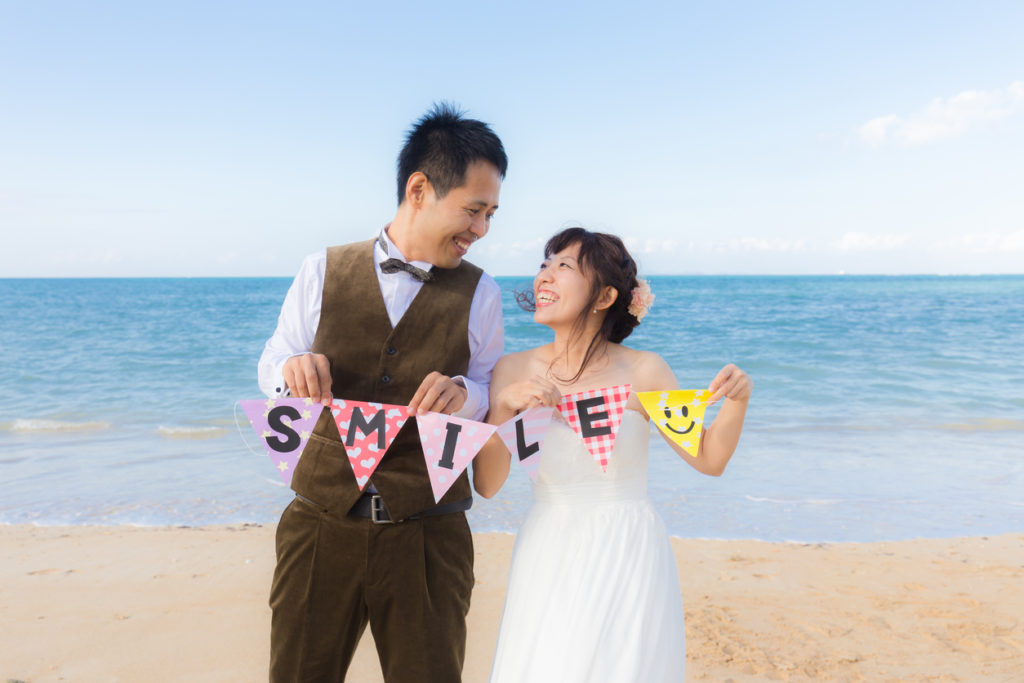
A Japanese couple having a typical resort wedding. They may or may not have another (or two) additional parties when they return to Japan.
On the whole, ceremonies tend to be quite small and intimate, frequently immediate family only – for Ikuko, it was just her, her husband and her mother.
It’s the “wedding parties” that involve a wider circle of friends, family and colleagues. (This is the reverse of some Western weddings, where it’s common to invite a large number of people to the ceremony and a smaller number to the reception.)
But this is where the fun really starts. If a ceremony is held, a reception with family and friends follows. But for many couples it doesn’t stop there.
After Ikuko and her husband returned from their intimate ceremony, they held a party for the wider family, and later their friends threw them a big party and multiple small parties.
Mai’s wedding was a mid-sized affair with 60 people in a beautiful old house in central Tokyo, but again, some friends later hosted a more relaxed drinking party to celebrate their nuptials. Yumi and her husband held a traditional Shinto ceremony in Shimane Prefecture with only 10 family members in attendance, but had two receptions: one with 80 people in Shimane, and another back in Tokyo with 70 friends.
4. Combining traditions
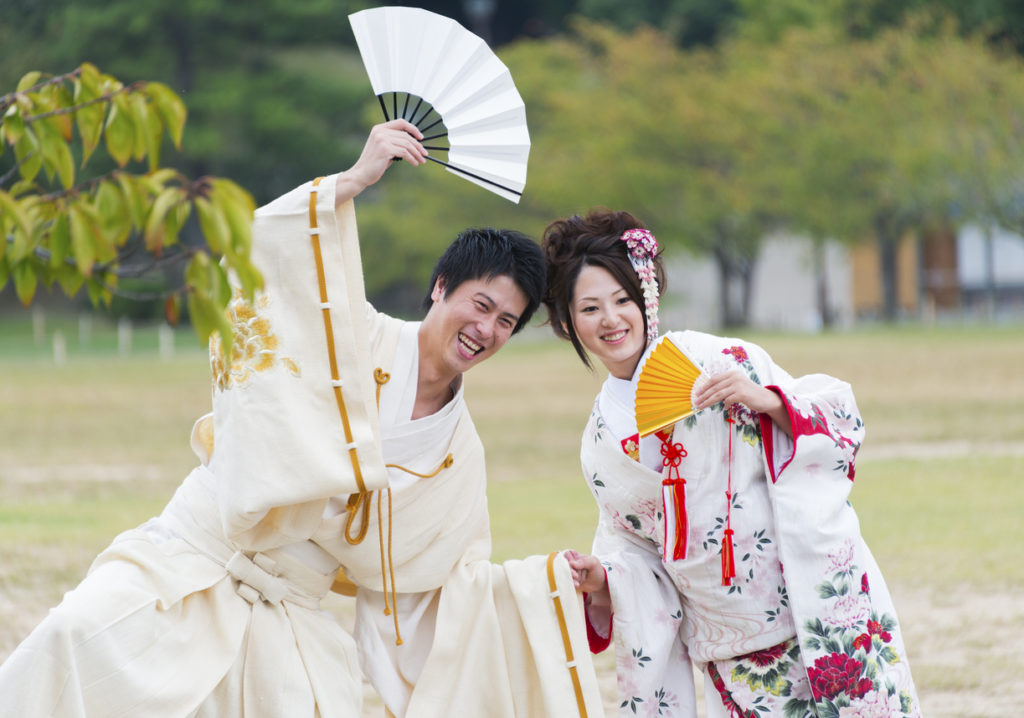
A mix of everything: Japanese couples may have traditional Shinto ceremonies, then head for a Western-style wedding party.
As you might have figured out by now, weddings in Japan are increasingly non-traditional. Kumi said, “While there are still many people who like to do their wedding in a traditional way, I think the styles have become very diversified.” She notes that sometimes couples choose a small wedding with just intimate family and friends so they can spend more on a honeymoon.
Based on the range of responses I got, she must be right. Ikuko went through the traditional matchmaker and engagement ceremony, but had a destination wedding on the beach with her in a white dress, held a photo shoot, then had dinner with a hula show. The combination of traditional and modern in one case is fascinating.
But what about those traditional Shinto ceremonies, with the solemn procession, the red umbrella, the bride’s face half-hidden by that white hood? They may not be the norm these days, but one of my respondents did have this kind of wedding. Yumi and her husband married at Izumo Taisha shrine in Shimane Prefecture, one of the most ancient Shinto shrines in the country, and she wore the shiromuku (白無垢) white kimono.
5. Costume changes
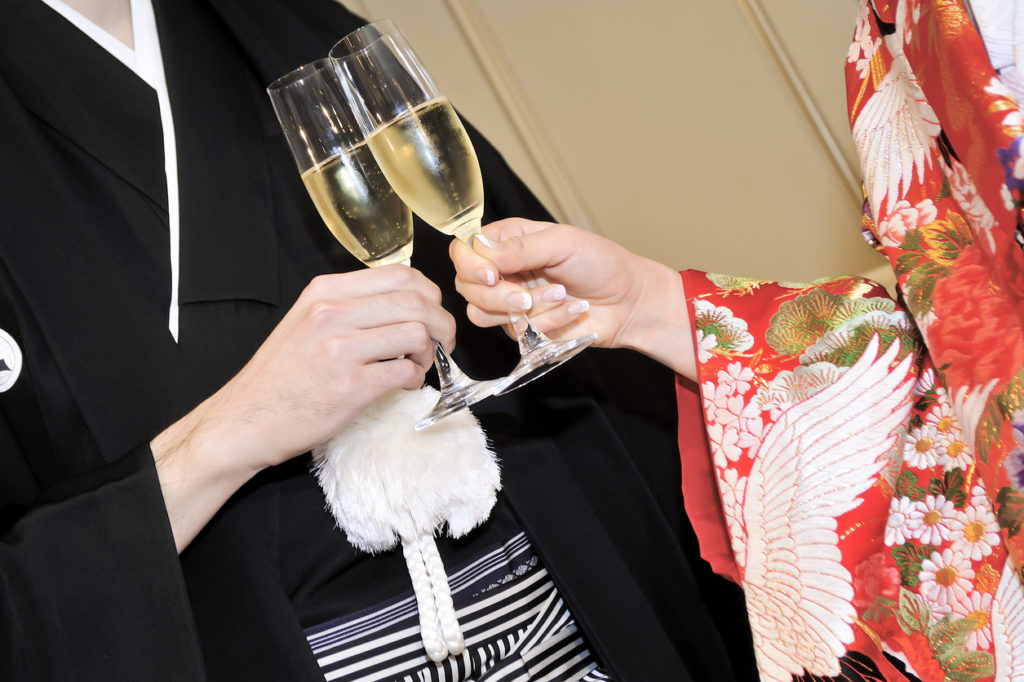
It’s common for Japanese couples to change their wedding attire at least once during the ceremony. Sometimes even more often.
Clothing tells a story, and it’s no different here. The bride’s traditional white kimono symbolizes purity, like its more modern Western counterpart, although the wataboshi (綿帽子) white hood that is often worn with it has a different story – apparently, it hides the “horns of jealousy.”
There are other bridal kimonos too, but the white outfit is the most formal. Colorfully patterned bridal kimonos were traditionally changed into for the reception (sometimes with a second one for part-way through), but these days most just feature in photo shoots. Mai donned a patterned kimono and her husband the black hakama (袴) for a shoot before their event, then she changed into a Western-style wedding dress. Miho skipped the kimono but changed halfway through the festivities from a white wedding dress into her mother’s remade dress. The dress change is often the factor behind brides leaving their two-hour ceremonies a couple of times.
6. Letters and ‘first bites’ — but no vows
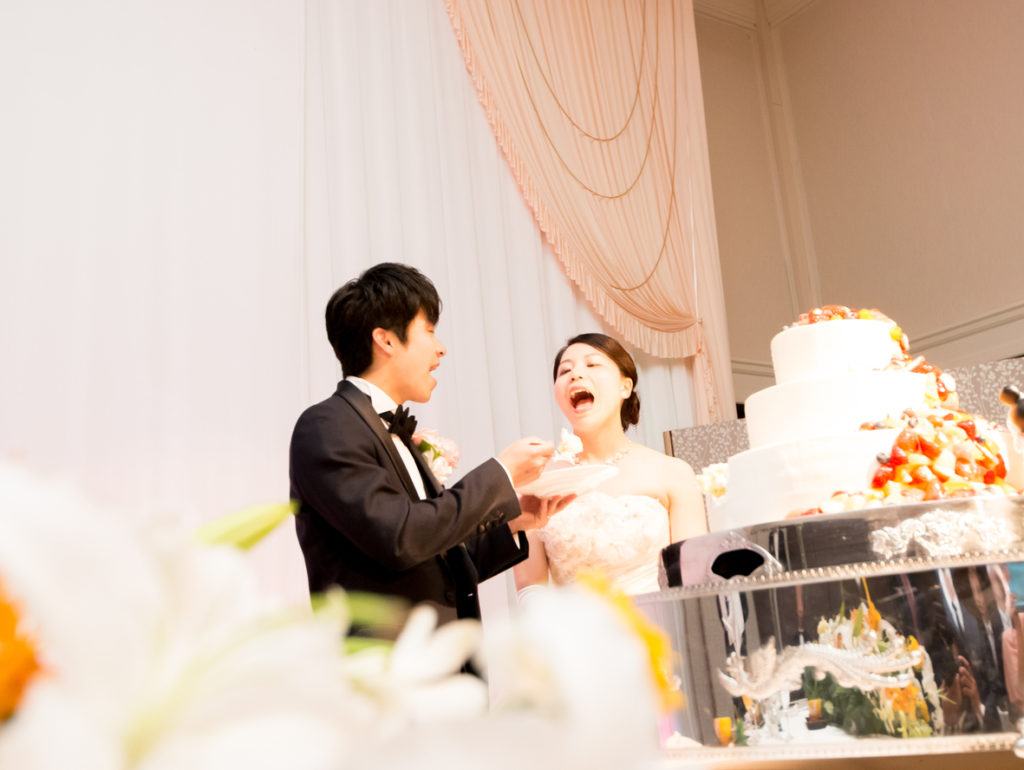
“The first bite.”
Wedding speeches are universal, but there are some additional practices that I’ve not seen elsewhere. For Mai and her husband, their speech expressing thankfulness even stood in for making vows before God.
Miho tells me it’s also typical for the bride to read a letter of gratitude out loud to her parents, although she adds, “I displayed my letter on a big screen instead.” This practice is common in Japanese weddings and replaces the typical Western vows exchanged between the bride and the groom. In Japan is all about being grateful to the others: the guests, the parents and the couple’s past.
Miho also mentions the “first bite” (ファーストバイト). The newlyweds cut the cake together, and then they each eat a spoon of the cake to represent that the groom will never give the bride trouble, and the bride will cook delicious meals. And with that sweet start, their married life begins.












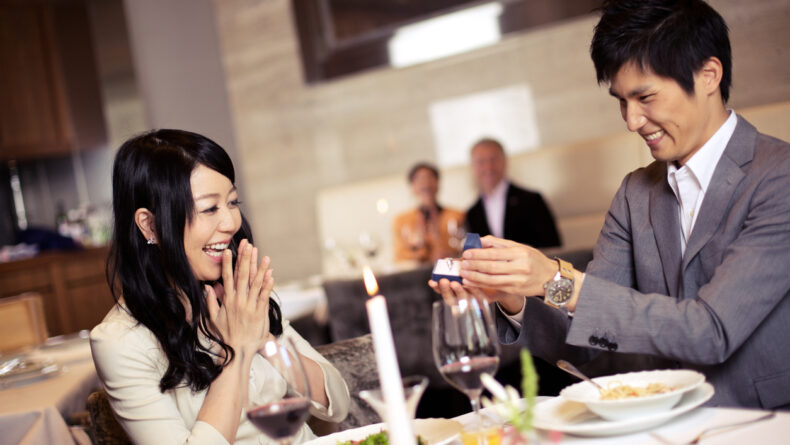
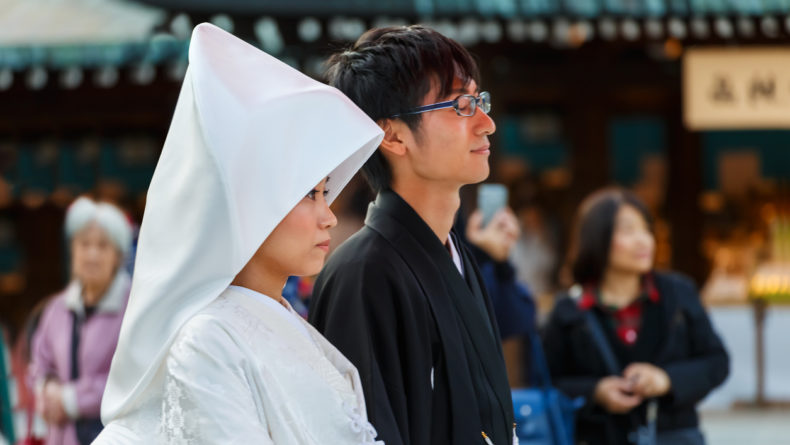
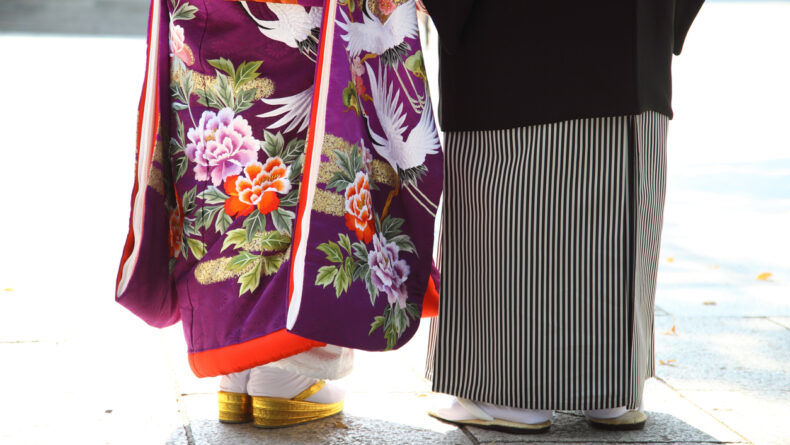

Leave a Reply